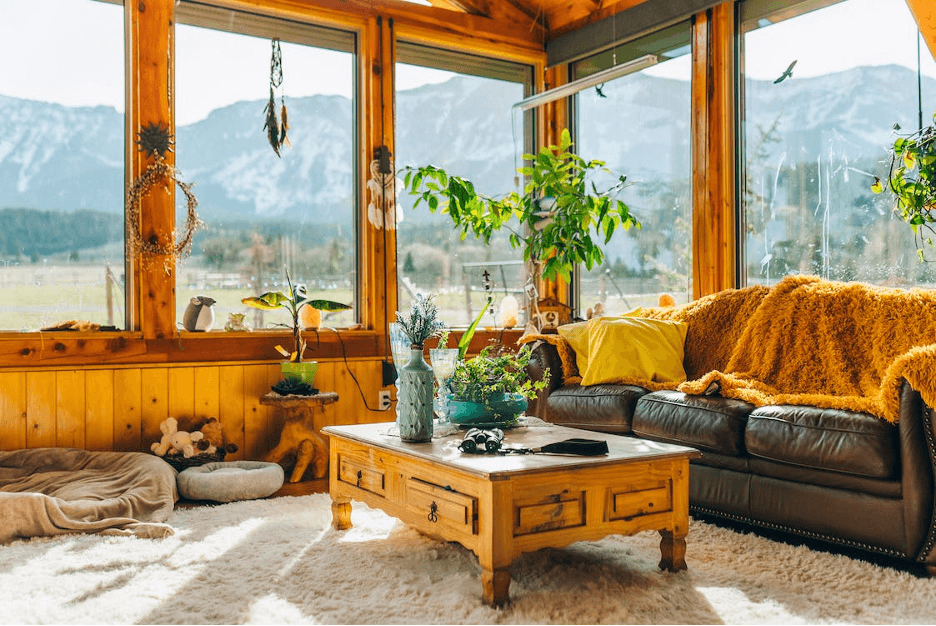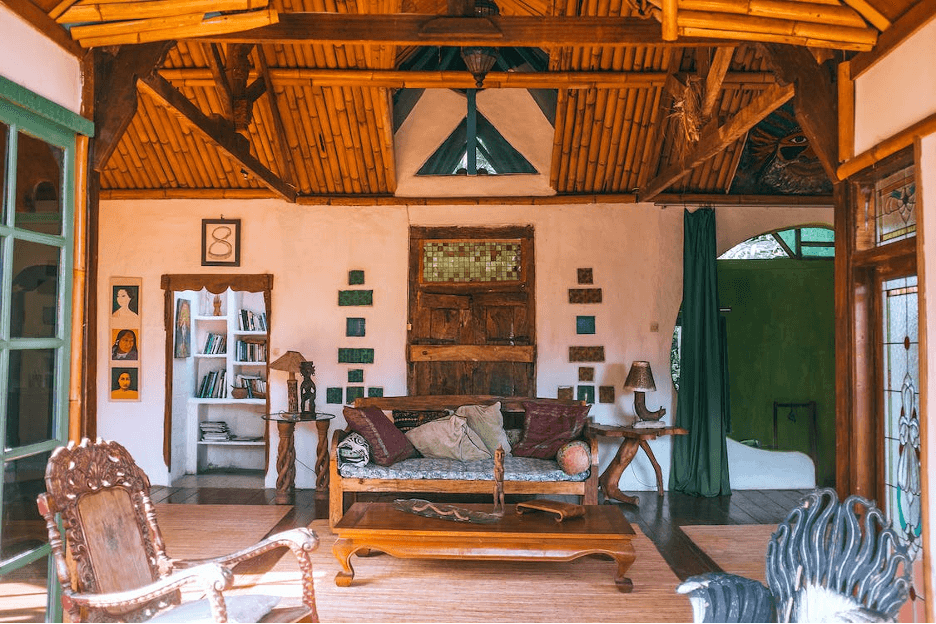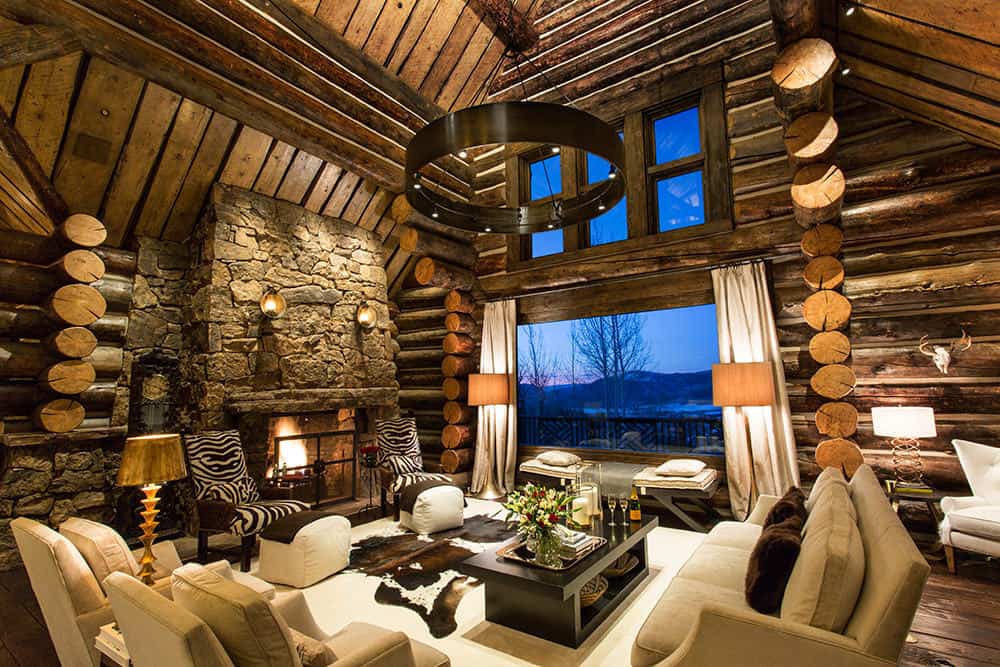American Indian art, also known as Native American art, is deeply ingrained in the history and culture of America. For those who want to embrace their American Indian heritage and showcase the culture in their home, here’s a style guide for you.
American Indian Style History
 Even before the Vikings’ discovery of what is now known as Newfoundland, and the arrival and settlement of Christopher Columbus and the Europeans, the indigenous peoples that thrived in the Americas have developed their own style and creativity through naturally-sourced materials and dyes.
Even before the Vikings’ discovery of what is now known as Newfoundland, and the arrival and settlement of Christopher Columbus and the Europeans, the indigenous peoples that thrived in the Americas have developed their own style and creativity through naturally-sourced materials and dyes.
The origins of most of these decorative designs are unfortunately no longer traceable, lost in antiquity. Natural forms and simple linear and geometric motifs, however, are still dominant in most of these works, so we can assume that most Native Americans pull their design inspirations from nature and the environment.
It is also evident that several of the original forms of American Indian designs are the results of an individual artist’s “vision quest.” Vision quests are often a rite of passage in Native American cultures, a spiritual journey undertaken often by young members of a tribe to commune with a guardian spirit and seek advice or guidance.
 After that, individuals who experience a vision quest carefully craft re-creations of these guardian figures through sculptures and drawings, whether in wood, stone, or hide. Non-artists even seek the help of the more artistic members of the community and describe their vision quest creatures in great detail to create records. Because of this often individualized process, the aesthetic quality of these designs vary greatly.
After that, individuals who experience a vision quest carefully craft re-creations of these guardian figures through sculptures and drawings, whether in wood, stone, or hide. Non-artists even seek the help of the more artistic members of the community and describe their vision quest creatures in great detail to create records. Because of this often individualized process, the aesthetic quality of these designs vary greatly.
Colors and Symbolism in Native American Styles
 Colors are not simply shades or hues for Native Americans. There is a symbolism attached to every color that American Indians use in their arts and designs. For your American Indian Heritage home style, make note of these color symbolisms:
Colors are not simply shades or hues for Native Americans. There is a symbolism attached to every color that American Indians use in their arts and designs. For your American Indian Heritage home style, make note of these color symbolisms:
- Red – stands for the Spiritual Life, earth, strength. It also symbolizes blood, wounds, violence, and war.
- Blue – is considered a female color, as it is also the color of wisdom, the sky, and water. It also stands for confidence.
- Black – is a male color and is often associated with warriors. It also stands for death, disease, and aggression.
- White – similar to some cultures, it is the color of mourning and peace. Native Americans also associate it with snow.
- Yellow – is the color of dawn and intellect. It also symbolizes heroism and a willingness to fight to the death.
With that in mind, American Indian style homes often use muted natural tones: green foliage, lemon yellow, salmon, and shale blue. Azure blue, long been considered to ward off evil by natives in the Southwest, is ideally applied to doors, windows, and curtains.
For furniture pieces, earthly and natural tones are the way to go: brown, cream, tan, terracotta, and white.
 Planning out your color palette for your own American Indian Heritage home style with this information in mind will allow a more authentic feel and layout that respects the Native American cultures as well as give off your desired aesthetic.
Planning out your color palette for your own American Indian Heritage home style with this information in mind will allow a more authentic feel and layout that respects the Native American cultures as well as give off your desired aesthetic.
What American Indian Crafts Are Made Of
American Indian art and design used what natural resources were available in their tribes and communities. Some examples are as follows:
- Peoples living in heavily forested regions showcased their creativity through wood carvings and sculptures.
- Those who lived near rivers and swamp lands, where clay is a major resource, created beautiful pottery.
- Peoples who resided in grasslands became masterful in basket weaving.
 Other materials that Native Americans used to add color and texture in their crafts include:
Other materials that Native Americans used to add color and texture in their crafts include:
- jade,
- turquoise,
- shell,
- metals,
- stone,
- milkweed fiber,
- birch bark,
- porcupine quills,
- deer hair,
- llama dung,
- sea lion whiskers
Some of these became valuable trade materials. Others still became highly coveted and, in certain communities, sacred especially when they were used for religious purposes.
 Moreover, American Indians often shaped their designs to the materials they were using, and not the other way around as Western artists are wont to do. Western American art often relies on flat surfaces and predetermined measures, while Native American art takes advantage of the curves, bumps, and natural outlines of the materials they had.
Moreover, American Indians often shaped their designs to the materials they were using, and not the other way around as Western artists are wont to do. Western American art often relies on flat surfaces and predetermined measures, while Native American art takes advantage of the curves, bumps, and natural outlines of the materials they had.
Architectural Considerations for Your Native American Home Style
 Your home’s architecture is an important consideration for an authentic American Indian heritage home style. Here are some things to consider:
Your home’s architecture is an important consideration for an authentic American Indian heritage home style. Here are some things to consider:
- Lodge-type architectures, with large exposed logs for support beams and columns, are a great choice for a Native American styled home.
- Adobe homes are also a great choice, but if you don’t live in one, you can utilize paints and plaster to create this aesthetic.
- High ceilings and large rooms are ideal, as Native American homes are open and can accommodate a large amount of people. Often, rooms are round-shaped, too, to reflect a teepee (or tipi), where ceremonial gatherings are held.
- If you want to save money from buying real wood, you can take advantage of modern materials like light-weight faux wood. Make sure to retain aesthetic balance, especially for smaller rooms.
These architectural features will be the base of your décor and will highlight them even more.
The Sacred Medicine Wheel Guidepost
Another principle that you might follow is the use of the sacred Medicine Wheel as a guidepost for your home design. Here’s an example:

Source: Science Direct
The Sacred Medicine Wheel will help you pay specific attention to the significant aspects of the Native American culture – the four directions, the elements, plant life, totem animals, and more.
Here’s a more detailed sample of a Medicine Wheel guidepost from Love to Know:

An example of what this implies is this: For the North room of your home, the color should be predominantly white, with sweetgrass and buffalo design motifs in the paintings, rugs, beddings, sculptures, and other art pieces. Since the element this signifies is air, adding air-or-wind-related decor, like wind chimes, are ideal. Because it signifies winter, white shag carpets and winter scenes in art pieces should be displayed. Finally, to complete the room, adding a bookcase full of books will illustrate the mental attribute.
 Use this information to guide you in your decisions for each room of your house and achieve a fully Native American aesthetic for your home.
Use this information to guide you in your decisions for each room of your house and achieve a fully Native American aesthetic for your home.
Furniture and Decor that Fit the Aesthetic
In one way or another, the American Indian heritage home style is distantly related to minimalism, in a way that its furniture are simple, no flashy features, made of natural materials, and match the architectural styles of woodland, rustic cabin, and Southwest homes.
 Furniture pieces for this home style often have the following qualities/features:
Furniture pieces for this home style often have the following qualities/features:
- Unpolished wood
- Graceful carvings
- Forged fittings
- Soft leather (if furnished)
- Dense linen and cotton covers
Other decorative pieces you can add include:
- A medicine wheel
- Wall paintings of Native American life
- Rugs and pillows with circles and geometric patterns
- Ceramics
- Animal sculptures and drawings, like turtles and the Thunderbird
Large floor pillows for the interior and hammocks in the yard also fit this aesthetic.
 However, remember to not overload your interior. As explained above, the American Indian heritage home style is minimalist. Make sure to create an atmosphere of space and freedom. Moving your upholstered furniture closer to the center and avoiding overdecorating the functional areas with too many items are surefire ways to ensure that.
However, remember to not overload your interior. As explained above, the American Indian heritage home style is minimalist. Make sure to create an atmosphere of space and freedom. Moving your upholstered furniture closer to the center and avoiding overdecorating the functional areas with too many items are surefire ways to ensure that.
Sources:
- Native American art – Britannica
- Coming to America: Who Was First? – NPR
- Symbolism Behind Color in Native American Art - Faust Gallery
- Native American Style Home Décor - Love to Know
- Native American interior design tips - Native News Online
- Using the Medicine Wheel as theory, conceptual framework, analysis, and evaluation tool in health research - ScienceDirect








